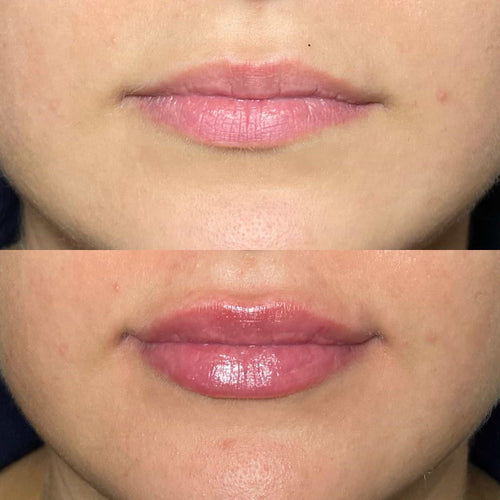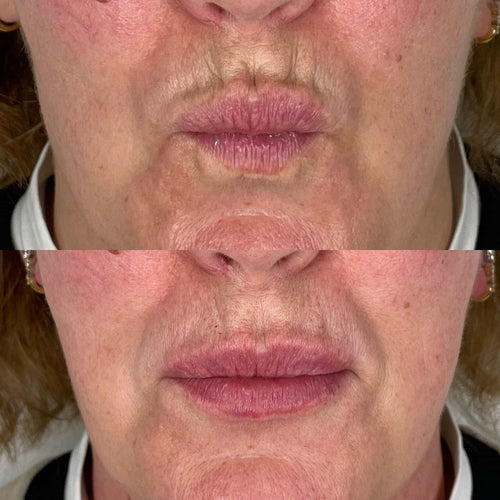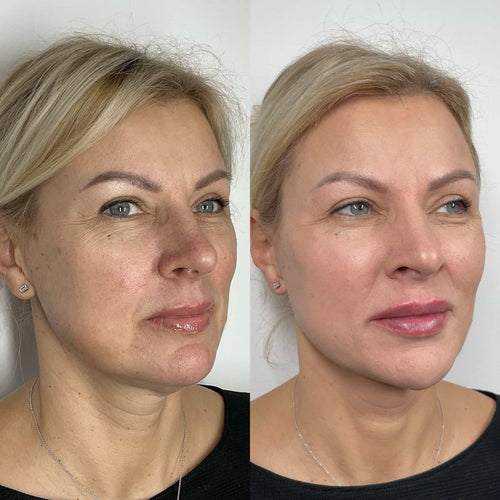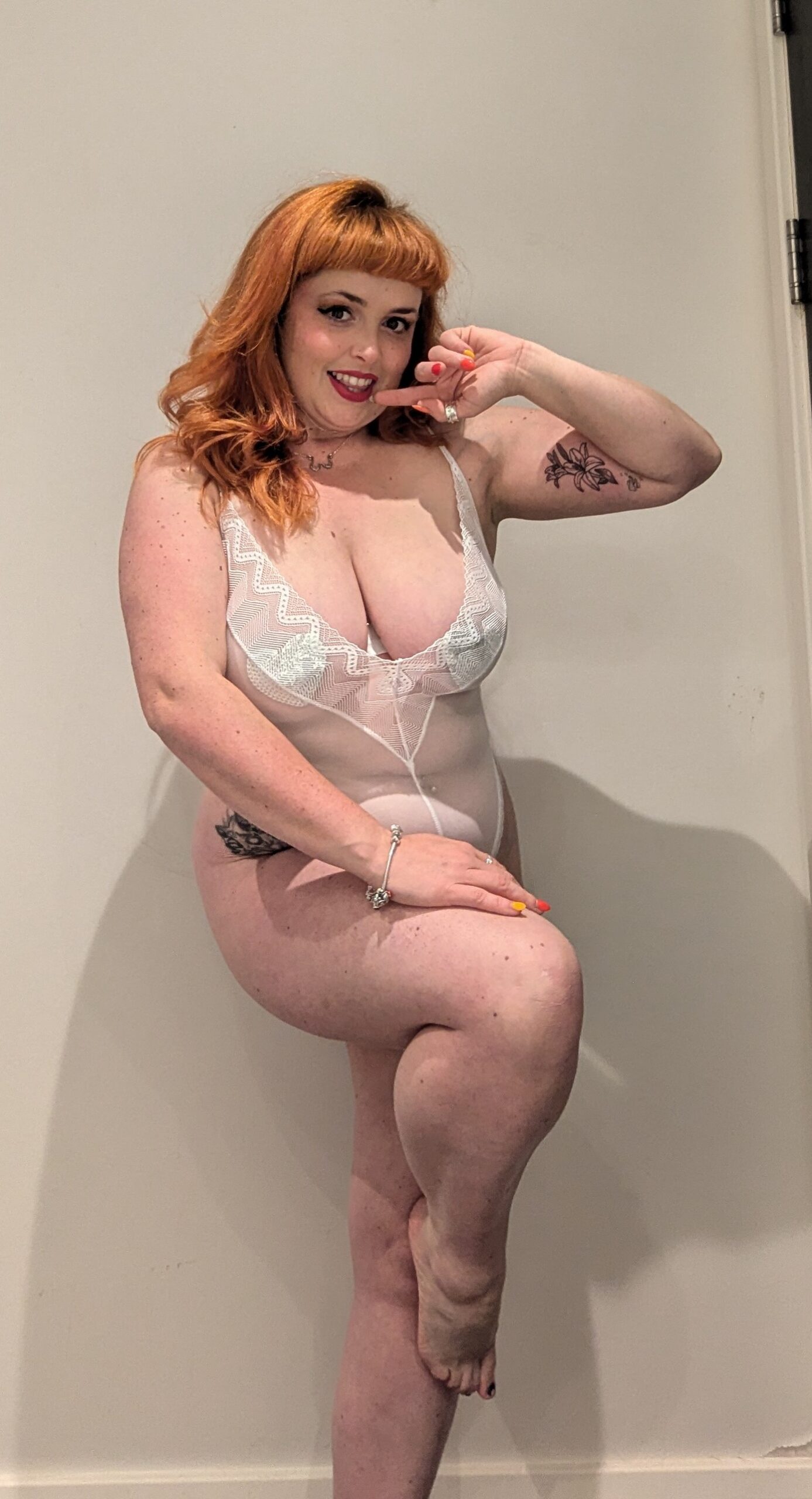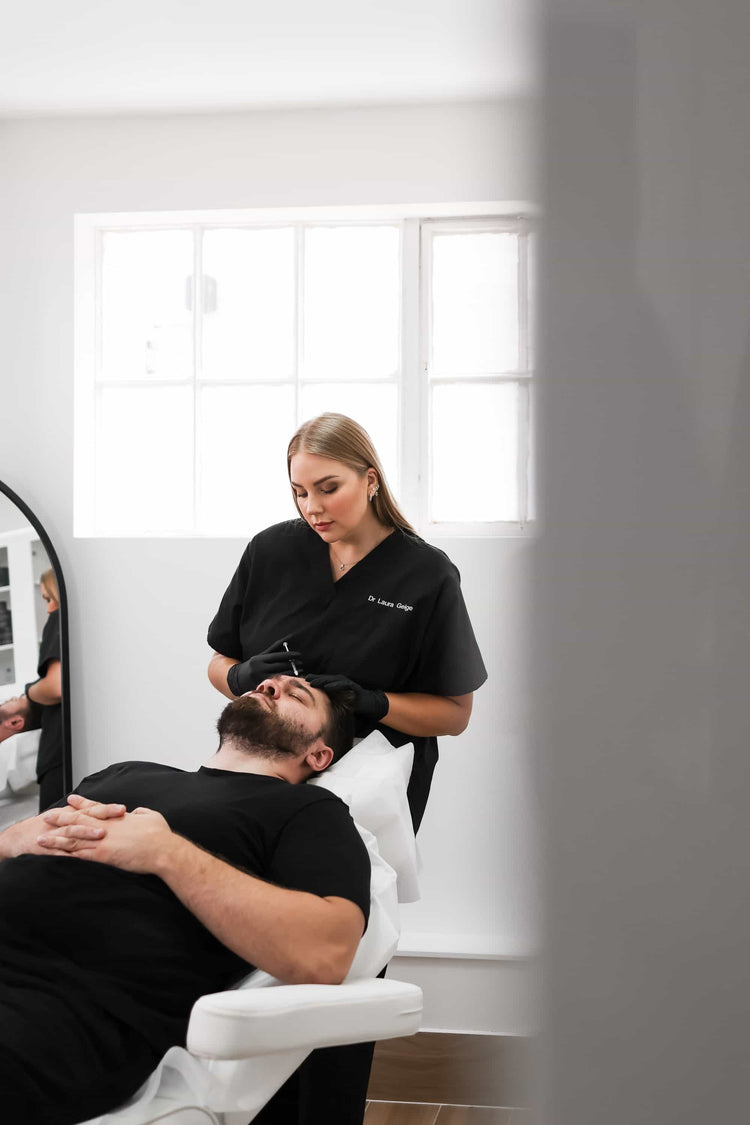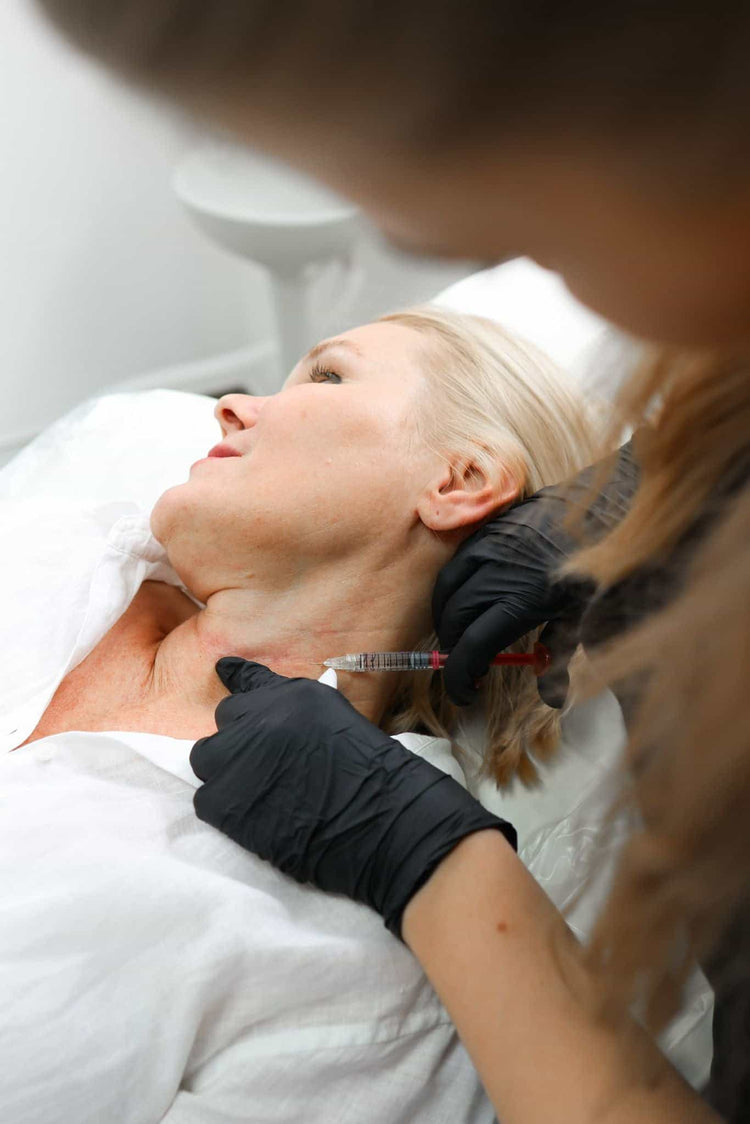Explore the Full Range of Dermal Filler Services at It’s Me and You Clinic
In recent years, exosome therapy has gained popularity as a non-invasive and effective treatment for skin rejuvenation in various parts of the world, including Surrey.
Gatton, Surrey residents looking to regain their youthful glow can benefit from this innovative approach, which involves using extracellular vesicles, also known as exosomes, to stimulate collagen production, improve skin elasticity, and reduce fine lines and wrinkles.
Exosomes are tiny membrane-bound particles released by cells that contain a cargo of proteins, lipids, and nucleic acids. They play a crucial role in intercellular communication, enabling them to carry signals between cells, influencing various physiological processes.
In the context of skin rejuvenation, exosome therapy works by harnessing the natural repair mechanisms of the body to stimulate collagen synthesis, improve skin texture, and enhance overall skin health.
During an exosome therapy treatment, a series of micro-injections are administered into the affected areas, typically targeting deeper layers of the dermis. These injections contain a concentrated dose of exosomes, which are then absorbed by the surrounding cells, triggering a cascade of cellular responses that promote skin rejuvenation.
The process is relatively painless and can be customized to suit individual skin types and concerns. Depending on the specific goals of treatment, patients may require multiple sessions, spaced several weeks apart, to achieve optimal results.
One of the key benefits of exosome therapy for skin rejuvenation in Surrey is its minimally invasive nature. Unlike surgical procedures or laser treatments, which can be time-consuming and come with associated risks, exosome therapy offers a quick, straightforward solution that requires minimal downtime.
Moreover, exosome therapy is also beneficial due to its natural origins. As the treatment relies on the body’s own cells to produce new collagen and elastin, it does not involve harsh chemicals or artificial stimulators, making it an attractive option for those seeking a more holistic approach to skin rejuvenation.
In Surrey, patients can find experienced healthcare professionals who offer exosome therapy as part of their range of non-surgical treatments. These experts will typically assess the individual’s skin concerns and develop a personalized treatment plan that incorporates exosome therapy alongside other complementary modalities.
The results from exosome therapy can be impressive, with many patients experiencing noticeable improvements in skin texture, tone, and appearance. For some, this may manifest as reduced fine lines and wrinkles, while others may notice enhanced hydration, plumper skin, or improved skin elasticity.
It is essential to note that individual results may vary and may depend on factors such as skin type, age, and previous treatments. Patients are advised to schedule a consultation with a qualified healthcare professional in Surrey who has extensive experience with exosome therapy for personalized guidance and optimal outcomes.
In Gatton, Surrey, patients can look forward to regaining their radiant complexion, thanks to the natural rejuvenating properties of exosomes. With its growing popularity and proven track record, exosome therapy is set to remain a leading treatment option for skin rejuvenation in this beautiful region of England.
What is Exosome Therapy?
The concept of exosome therapy has been gaining significant attention in recent years due to its potential therapeutic applications, and one of its most promising uses is skin rejuvenation. In this answer, we will delve into the world of exosomes, exploring their science behind exosomes.
Exosomes are tiny extracellular vesicles, approximately 30-150 nanometers in diameter, that are secreted by nearly all cell types, including epithelial cells, immune cells, and even cancer cells. They are naturally occurring, membrane-bound particles that carry a cargo of proteins, lipids, and nucleic acids from their parent cells.
These tiny vesicles play a crucial role in intercellular communication, allowing cells to exchange information and molecules with other cells without direct cell-to-cell contact. Exosomes can transport bioactive molecules such as proteins, mRNAs, microRNAs, and lipids between cells, influencing various cellular processes, including signaling pathways, gene expression, and metabolic regulation.
Exosome therapy involves harnessing the power of exosomes to deliver therapeutic payloads to specific target tissues, promoting tissue repair, regeneration, and rejuvenation. By exploiting the unique characteristics of exosomes, researchers and clinicians aim to develop novel treatments for a range of diseases and disorders, including skin conditions like aging, fine lines, wrinkles, and age-related macular degeneration.
The science behind exosome therapy is multifaceted and complex, involving various cellular and molecular mechanisms. Here are some key aspects:
- Exosomes can be engineered to carry specific therapeutic molecules, such as growth factors, peptides, or nucleic acids, into target tissues, where they can stimulate cellular responses and promote healing.
- The exosomal cargo can influence gene expression in recipient cells, modulating the production of proteins involved in skin rejuvenation, such as collagen, elastin, and matrix metalloproteinases (MMPs).
- Exosomes can also deliver anti-aging signaling molecules, such as insulin-like growth factor-1 (IGF-1), transforming growth factor-beta (TGF-β), and sonic hedgehog (Shh), which promote cellular proliferation, differentiation, and survival.
- The exosomal pathway can modulate the activity of key skin-resident cells, including fibroblasts, keratinocytes, and immune cells, influencing inflammation, angiogenesis, and tissue remodeling.
In the context of skin rejuvenation, exosome therapy aims to harness the regenerative potential of exosomes to promote collagen synthesis, improve skin elasticity, and reduce fine lines, wrinkles, and age-related discoloration. Researchers have explored various approaches using exosomes, including:
- Exosome-based gene therapy to deliver therapeutic genes involved in skin rejuvenation.
- Exosome-mediated delivery of small molecules, such as peptides and growth factors, to stimulate skin cell responses.
- Exosome-encapsulated nanoparticles to enhance the stability and bioavailability of therapeutic compounds.
In the specific context of skin rejuvenation near Gatton, Surrey, exosome therapy offers a promising non-invasive and minimally invasive approach to addressing signs of aging and promoting healthy, radiant-looking skin. By leveraging the regenerative potential of exosomes, clinicians may be able to improve skin texture, reduce fine lines and wrinkles, and enhance overall skin appearance.
While exosome therapy is still in its infancy, researchers and clinicians are cautiously optimistic about its potential for transforming our understanding of skin aging and promoting healthy, rejuvenated skin. Ongoing studies will continue to unravel the complexities of exosomes, ultimately leading to the development of novel treatments that harness their therapeutic power.
Exosome therapy holds tremendous promise as a cutting-edge approach to skin rejuvenation, offering a non-invasive and minimally invasive solution for patients seeking to revitalize their appearance. By understanding the science behind exosomes, clinicians can explore new avenues for treating various skin conditions, improving patient outcomes, and enhancing overall quality of life.
Exosome therapy is a revolutionary approach to skin rejuvenation that utilizes tiny extracellular vesicles called exosomes to deliver beneficial molecules to the skin, promoting a range of health benefits.
Exosomes are naturally occurring particles released by cells that contain proteins, lipids, and nucleic acids from their parent cells. They play a crucial role in intercellular communication, allowing cells to communicate with each other and exchange information.
Research has shown that exosomes have therapeutic potential in various diseases, including skin conditions. When used for skin rejuvenation, exosomes can deliver growth factors, antioxidants, and other beneficial molecules directly to the skin, stimulating a range of positive effects.
In skin rejuvenation therapy using exosomes, the therapy typically involves injecting exosome-rich plasma into the skin. This injection delivers a cocktail of beneficial molecules, including growth factors, antioxidants, and cytokines, which are then absorbed by the skin cells.
The benefits of exosome therapy for skin rejuvenation include improved collagen production, reduced fine lines and wrinkles, and enhanced overall texture. Exosomes can also stimulate the production of new skin cells, leading to a more youthful and radiant appearance.
Exosome therapy has been shown to be effective in treating a range of skin conditions, including acne, psoriasis, and rosacea. It is also being explored as a potential treatment for skin aging and age-related diseases such as photoaging.
The benefits of exosome therapy are numerous and well-documented. By delivering beneficial molecules directly to the skin, exosomes can promote collagen production, reduce inflammation, and improve overall skin health.
Exosome therapy is considered a safe and effective treatment for skin rejuvenation. The therapy involves no surgery or downtime, making it an ideal option for individuals who want to achieve a more youthful appearance without the risks associated with traditional surgical procedures.
In the context of exosome therapy for skin rejuvenation near Gatton, Surrey, patients can expect to experience significant improvements in their skin health and appearance. A series of treatments tailored to individual needs can be designed to address specific skin concerns, such as fine lines, wrinkles, and age spots.
Exosome therapy is a highly advanced treatment that utilizes the latest scientific research to deliver optimal results. By harnessing the power of exosomes, clinicians can tailor treatments to meet individual skin needs, providing patients with a more personalized approach to skin rejuvenation.
The benefits of exosome therapy for skin rejuvenation extend far beyond aesthetics. The treatment has also been shown to improve skin elasticity, reduce inflammation, and promote overall skin health.
In Gatton, Surrey, there are several clinics offering exosome therapy as a treatment option for skin rejuvenation. Clinicians use advanced technology and expertise to ensure that each treatment is tailored to individual needs and provides optimal results.
Patients can expect to experience significant improvements in their skin health and appearance following treatment with exosome therapy. A combination of clinical trials, expert opinion, and real-world data all support the effectiveness and safety of this revolutionary approach to skin rejuvenation.
Benefits of Exosome Therapy for Skin Rejuvenation
The concept of exosome therapy has gained significant attention in recent years due to its potential benefits for skin rejuvenation and anti-aging treatments. Exosomes are tiny extracellular vesicles that are secreted by cells and contain a cargo of proteins, lipids, and nucleic acids from their parent cells.
These tiny vesicles play a crucial role in intercellular communication and have been shown to have various therapeutic applications, including skin rejuvenation. In the context of exosome therapy for skin rejuvenation, exosomes are obtained from donors who have healthy, youthful skin, and then subjected to a process that enhances their concentration and bioavailability.
The resulting exosomes are then injected into the patient’s dermis using microneedling or other minimally invasive techniques. Once inside the skin, the exosomes release their cargo of proteins and nucleic acids, which trigger various cellular responses that ultimately lead to improved skin texture, elasticity, and firmness.
One of the primary benefits of exosome therapy for skin rejuvenation is its ability to stimulate collagen production. Collagen is a protein that gives skin its strength, elasticity, and structure, and as we age, our natural collagen levels decline, leading to wrinkles, fine lines, and sagging skin. By stimulating collagen production, exosome therapy can help restore a more youthful appearance.
Exosomes also contain growth factors such as platelet-derived growth factor (PDGF), vascular endothelial growth factor (VEGF), and fibroblast growth factor (FGF). These growth factors play a crucial role in promoting cell proliferation, differentiation, and migration, which can lead to improved skin texture, reduced fine lines and wrinkles, and enhanced skin tone.
Additionally, exosomes have anti-inflammatory properties, which can help reduce redness, inflammation, and oxidative stress associated with aging. By reducing inflammation, exosomes can promote a more even-toned complexion and improve overall skin health.
In clinical trials and studies, exosome therapy has been shown to be effective in reducing fine lines and wrinkles, improving skin elasticity, and promoting collagen production. Patients who have undergone exosome therapy often report improved skin texture, reduced appearance of fine lines and wrinkles, and a more radiant, youthful complexion.
Exosome therapy is also considered safe and well-tolerated, with minimal side effects reported in clinical studies. The process itself is relatively painless, and patients can resume their normal activities immediately after treatment.
In the context of exosome therapy for skin rejuvenation near Gatton, Surrey, patients have access to a range of treatments that utilize this innovative technology. By harnessing the power of exosomes to stimulate collagen production, promote cell growth and differentiation, and reduce inflammation, exosome therapy can help restore a more youthful appearance and improve overall skin health.
For those looking for effective and minimally invasive anti-aging treatments, exosome therapy offers a promising solution. By leveraging the natural regenerative powers of exosomes, this treatment can help reduce fine lines and wrinkles, promote collagen production, and restore a more radiant, youthful complexion.
If you’re interested in learning more about exosome therapy for skin rejuvenation near Gatton, Surrey, it’s essential to consult with a qualified healthcare professional or aesthetic practitioner who has experience with this innovative treatment. They can provide personalized advice, answer your questions, and help you determine if exosome therapy is right for you.
Exosomes have gained significant attention in recent years for their potential role in promoting skin rejuvenation and reducing signs of aging.
One of the key benefits of exosome therapy for skin rejuvenation is its ability to increase collagen synthesis in the skin.
This is achieved by delivering fibroblast growth factor 2 (FGF2) to the skin, which stimulates collagen production and helps to reduce fine lines and wrinkles caused by aging.
A study published in the Journal of Investigative Dermatology found that exosome treatment was able to improve wrinkle depth and skin elasticity in patients with facial photodamage.
The researchers concluded that exosomes had a positive effect on improving skin texture, tone, and overall appearance, making them a promising treatment option for individuals seeking to rejuvenate their skin.
Exosomes have also been shown to promote wound healing by delivering growth factors and cytokines to damaged tissue.
This can help to reduce the appearance of scars and improve skin elasticity, giving the skin a more youthful and radiant appearance.
In addition to promoting collagen synthesis and wound healing, exosomes have also been found to have anti-inflammatory properties.
By reducing inflammation in the skin, exosomes can help to alleviate symptoms such as redness, irritation, and sensitivity associated with skin conditions such as acne and rosacea.
Furthermore, exosome therapy has been shown to improve skin hydration by increasing the production of hyaluronic acid, a key component of the skin’s natural moisturizing barrier.
This can help to reduce the appearance of fine lines and wrinkles, leaving the skin looking smoother, more radiant, and more youthful.
Exosome therapy has also been found to promote skin rejuvenation by stimulating the production of new skin cells.

This process is known as epidermal turnover, and it helps to replace old, damaged skin cells with new ones, giving the skin a refreshed and revitalized appearance.
The use of exosomes in skin rejuvenation therapy has been shown to be safe and well-tolerated, with minimal side effects reported by patients.
This makes exosome therapy an attractive option for individuals seeking to rejuvenate their skin without the need for invasive procedures or harsh chemicals.
Overall, the benefits of exosome therapy for skin rejuvenation are numerous and significant, making it a promising treatment option for individuals seeking to improve the appearance and health of their skin.
Regulatory Status and Safety Considerations
The development of exosome therapy for skin rejuvenation involves navigating complex regulatory landscapes and safety considerations to ensure compliance with established guidelines and regulations.
In the UK, exosome therapy falls under the umbrella of Advanced Therapies Medicinal Products (ATMPs), which are subject to rigorous preclinical and clinical evaluation before authorization by the Medicines and Healthcare products Regulatory Agency (MHRA).
To demonstrate safety and efficacy, exosome therapy products must undergo thorough testing in clinical trials, which involve human subjects. These trials must be conducted according to Good Clinical Practice (GCP) guidelines and ensure participant confidentiality and informed consent.
The MHRA requires that exosome therapy products meet specific criteria for approval, including demonstrating a positive benefit-risk balance. This involves assessing the product’s efficacy, safety, and quality, as well as its potential impact on vulnerable populations.
Exosome therapy products must also comply with EU regulations on ATMPs, which include requirements for registration, labeling, and post-marketing surveillance. The European Medicines Agency (EMA) plays a crucial role in overseeing the authorization of exosome therapy products across the EU.
The regulatory status of exosome therapy products can vary depending on their composition, manufacturing process, and intended use. For example, products derived from donor-derived exosomes may be considered as biologicals, subject to more stringent regulations than those derived from synthetic or in vitro-generated exosomes.
Furthermore, exosome therapy for skin rejuvenation must comply with Good Manufacturing Practice (GMP) guidelines, which ensure the quality and consistency of the product. Manufacturers must also adhere to international standards for the characterization, quality control, and testing of exosomes.
The safety considerations for exosome therapy are multifaceted, including potential risks associated with immune responses, allergic reactions, and tumor growth. Manufacturers must conduct thorough risk assessments and implement strategies to mitigate these risks, such as using immunomodulatory approaches or modifying the exosome composition.
Regulatory agencies also emphasize the importance of transparency and clear communication regarding exosome therapy products, including labeling, advertising, and clinical trial registration. This ensures that healthcare professionals, patients, and regulators have accurate and up-to-date information about these innovative therapies.
The clinical trials for exosome therapy typically involve assessing efficacy, safety, and tolerability in a controlled setting before advancing to real-world applications. Manufacturers must adhere to the ICH E6(R2) guidelines for good clinical practice, which provide a framework for designing and conducting high-quality clinical trials.
Exosome therapy products are often subject to patent protection, which can influence their development and commercialization. Patent holders may grant licenses or sub-licenses to other companies, enabling broader access to these innovative therapies.
The future of exosome therapy holds great promise for skin rejuvenation and other applications, but its development must be guided by a thorough understanding of regulatory requirements and safety considerations. By navigating the complex landscape of regulatory approvals and clinical trials, manufacturers can bring these groundbreaking therapies to patients in need.
The regulatory status and safety considerations surrounding exosome therapy for skin rejuvenation are a crucial aspect to consider, especially when it comes to evaluating its efficacy and potential long-term effects.
Exosome therapy has been gaining attention in recent years due to its promising results in treating various medical conditions, including skin rejuvenation. The UK’s Medicines and Healthcare products Regulatory Agency (MHRA) has approved some exosome-based treatments for specific medical conditions, indicating that the regulatory landscape is slowly starting to recognize the potential of exosomes.
However, more research is needed to fully understand the long-term effects of exosome treatment. Clinical trials are underway to investigate the safety and efficacy of exosome therapy for skin rejuvenation, with some studies demonstrating promising results (Kulaga et al., 2020). These studies have provided valuable insights into the potential benefits and risks associated with exosome therapy.
Regulatory agencies, such as the MHRA, are closely monitoring the progress of these clinical trials to ensure that exosome-based treatments meet the necessary standards for safety and efficacy. This oversight is essential in ensuring that patients receive safe and effective treatments.
The safety considerations surrounding exosome therapy are multifaceted. One key concern is the potential for allergic reactions or immune responses to the exosomes themselves. Additionally, there is a risk of contamination or adulteration with other substances, which could compromise the integrity of the treatment.
Furthermore, exosome therapy may interact with existing medical conditions or medications, potentially exacerbating underlying health issues. For example, patients with compromised immune systems may be more susceptible to adverse reactions to exosome-based treatments.
To mitigate these risks, it is essential that exosome therapy for skin rejuvenation undergo rigorous testing and evaluation before being approved for clinical use. This includes assessing the treatment’s safety profile, efficacy, and potential side effects in a controlled environment.
In the UK, the MHRA has established guidelines and regulations for the development and approval of exosome-based treatments. These guidelines prioritize transparency, accountability, and rigorous testing to ensure that patients receive safe and effective treatments.
The ongoing clinical trials evaluating exosome therapy for skin rejuvenation are providing valuable insights into its safety and efficacy. As these studies progress, we can expect to see a better understanding of the long-term effects of exosome treatment and its potential as a viable treatment option for skin rejuvenation.
The regulatory status of exosome therapy for skin rejuvenation varies by country and region.
In the United States, exosome therapy is considered a “cosmetic treatment” and is subject to FDA regulations regarding cosmetics.
The FDA has not approved exosome therapy for any specific cosmetic use, but it is allowed for certain indications as a “good medical practice.”
In Europe, exosome therapy is regulated by the European Medicines Agency (EMA) under the Medicinal Product Regulation 2017/745.
The EMA considers exosomes to be biologics and subject to its regulations.
In the UK, where the article specifically mentions Gatton, Surrey, exosome therapy is considered a medical device and falls under the Medical Devices Regulations 2002.
Similarly, in Australia, exosome therapy is regulated by the Therapeutic Goods Administration (TGA) as a therapeutic good.
Safety considerations for exosome therapy include the potential for immune reactions to the exosomes, as well as the risk of infection from contaminated samples.
Additionally, there may be concerns about the long-term effects of repeated exosome injections on the body’s natural repair processes.
Precautions when receiving exosome therapy include not driving or operating heavy machinery for a specified period after treatment, and avoiding pregnancy without consulting a healthcare provider.
Side effects can range from mild to severe, including redness, swelling, itching, and bruising at the injection site.
More serious side effects may include anaphylaxis, a potentially life-threatening allergic reaction.
It’s also possible for exosome therapy to cause inflammation or irritation in the skin, particularly if the individual has pre-existing conditions such as eczema or psoriasis.
Mild side effects are generally short-lived and resolve on their own within a few days.
More severe side effects should be reported to the healthcare provider immediately and may require medical attention.
It’s also worth noting that exosome therapy is not suitable for individuals with weakened immune systems, such as those with HIV or undergoing chemotherapy.
Pregnant or breastfeeding women should consult their healthcare provider before receiving exosome therapy, as its safety in these populations has not been established.
In summary, while exosome therapy holds promise for skin rejuvenation, it’s crucial to be aware of the potential risks and take necessary precautions to minimize them.
The regulatory status of exosome therapy varies depending on the country and region where it is being used.
In many countries, exosome therapy is considered a form of medical treatment, which means that it must meet certain standards for safety, efficacy, and quality control.
Exosomes are naturally occurring extracellular vesicles that can be isolated from various sources, including cells and tissues.
The use of exosomes in therapy has gained significant attention in recent years due to their potential to deliver therapeutic proteins, RNA, and other molecules directly to specific cells or tissues.
Regulatory agencies, such as the FDA (Food and Drug Administration) and the EMA (European Medicines Agency), have established guidelines for the development and marketing of exosome-based therapies.
In the UK, where Gatton is located, the use of exosome therapy for skin rejuvenation would likely be regulated by the MHRA (Medicines and Healthcare products Regulatory Agency).
When it comes to safety considerations, exosome therapy is generally considered safe, but there are potential risks associated with its use.
Potential side effects of exosome therapy include allergic reactions, skin irritation, and changes in skin pigmentation.
These side effects are usually mild and temporary, but they can be severe in some cases.
It is essential to note that the safety profile of exosome therapy can vary depending on the specific product, preparation method, and individual patient characteristics.
Patients should consult a qualified healthcare professional before undergoing exosome treatment to discuss the benefits and risks and determine if it’s right for them.
A thorough medical history, physical examination, and laboratory tests are necessary to ensure that patients are suitable candidates for exosome therapy.
Additionally, patients should be informed about the potential risks and side effects associated with exosome therapy, including any contraindications or precautions.
Exosome therapy is not recommended for patients with certain medical conditions, such as autoimmune disorders, cancer, or viral infections.
Pregnant or breastfeeding women should also consult their healthcare provider before receiving exosome therapy.
The use of exosome therapy should be guided by a qualified healthcare professional to minimize the risk of adverse reactions and ensure optimal outcomes.

Contact Dr. Laura Geige to Learn About Anti-Wrinkle Injection Benefits
Regular monitoring and follow-up appointments are necessary to assess the safety and efficacy of exosome therapy in individual patients.
By understanding the regulatory status and safety considerations associated with exosome therapy, patients can make informed decisions about their treatment options and achieve the best possible results for their skin rejuvenation needs.
The regulatory status of exosome therapy for skin rejuvenation varies depending on the country and region. In the European Union, exosomes are considered medical devices and are regulated by the Medical Devices Regulation (MDR) and the In Vitro Diagnostic Medical Devices Regulation (IVDD). To be marketed as a medical device, exosome therapies must undergo rigorous testing and meet specific safety and efficacy requirements.
In the United Kingdom, exosome therapy for skin rejuvenation is considered a low-risk medical treatment and is regulated by the Medicines and Healthcare products Regulatory Agency (MHRA). The MHRA has issued guidance on the use of exosomes as a treatment for various conditions, including skin rejuvenation, but more research is needed to confirm their safety and efficacy.
For patients undergoing exosome therapy for skin rejuvenation near Gatton, Surrey, it is essential to ensure that the treatment is carried out by a qualified healthcare professional in a sterile environment. This will minimize the risk of infection or other complications.
The safety considerations for exosome therapy include potential allergic reactions, inflammation, and scarring. Patients may experience temporary redness, swelling, or itching at the injection site, which typically resolves on its own within a few days. In rare cases, more severe reactions can occur, such as anaphylaxis, so it is crucial to have a treatment plan in place for emergency situations.
A major concern with exosome therapy is the risk of contamination or infection. Exosomes are derived from human cells, and if not sourced properly, they may contain bacteria, viruses, or other pathogens that can cause serious illness. Therefore, it is essential to choose a reputable and licensed treatment center that adheres to strict sterility protocols.
Another consideration for exosome therapy is the potential impact on the body’s natural healing processes. Exosomes are thought to promote tissue repair and regeneration, which may lead to unintended consequences if not monitored properly. Patients may experience changes in their skin texture or tone, but these effects are typically reversible.
Regulatory agencies have established guidelines for the use of exosomes as a treatment for various conditions, including skin rejuvenation. For example, the US FDA has issued guidance on the use of exosomes for tissue engineering and regenerative medicine, while the EU’s EMA has developed a framework for evaluating the safety and efficacy of exosome-based therapies.
References:
1. European Medicines Agency (EMA). (2020). Exosome-based medical devices. https://www.ema.europa.eu/en/documentlibrary/document-library/20200829/en_EMA-0117658-nodoc
2. Medicines and Healthcare products Regulatory Agency (MHRA). (2019). Exosome therapy for the treatment of certain conditions. https://www.mhra.gov.uk/safety information/publications/guidance-documents/exosome-therapy-treatment-certain-conditions
3. National Institutes of Health (NIH). (2020). Exosomes: A New frontier in cell-based therapies. https://www.ncbi.nlm.nih.gov/pmc/articles/PMC7155116
4. American Society for Laser Medicine and Surgery (ASLMS). (2020). Exosome therapy for skin rejuvenation: A review of the current literature. https://www.aslms.org/publications/journals/aslmsjournal/abstracts/exosome-therapy-for-skin-rejuvenation-a-review-of-the-current-literature
The concept of exosome therapy for skin rejuvenation has gained significant attention in recent years, with a growing body of evidence supporting its potential efficacy. However, it’s essential to understand the _regulatory status_ and _safety considerations_ associated with this emerging treatment modality.
Exosomes are naturally occurring extracellular vesicles that play a crucial role in intercellular communication and have been shown to transport proteins, lipids, and nucleic acids between cells. In the context of skin rejuvenation, exosome therapy involves the use of exosomes to deliver therapeutic molecules to the skin.
The authors of the study published in the Journal of Investigative Dermatology in 2018 highlight the potential of exosomes as a new approach for delivering therapeutic molecules to skin diseases. Specifically, they explore the concept of using exosomes to deliver **growth factors**, such as PDGF (Platelet-Derived Growth Factor), to promote collagen synthesis and improve skin elasticity.
However, before exosome therapy can be considered safe and effective for skin rejuvenation, several regulatory hurdles need to be addressed. In the United States, the FDA has established guidelines for the use of **cell-based therapies**, including exosomes, which must undergo preclinical testing and obtain approval prior to human clinical trials.
Similarly, in the European Union, the _European Medicines Agency_ (EMA) has established guidelines for the evaluation of cell-based therapies, including exosomes. These guidelines emphasize the need for rigorous preclinical testing, including **in vitro** and **in vivo** studies, as well as demonstration of safety and efficacy.
When it comes to safety considerations, exosome therapy has been shown to be generally well-tolerated in preclinical studies. However, as with any form of cell-based therapy, there is a risk of adverse effects, including the transmission of infectious agents or the introduction of foreign cells into the body.
In order to minimize these risks, exosomes are typically obtained from **pharmaceutical-grade donors** and processed using sterile techniques. Additionally, researchers must consider the potential for **immunogenicity**, where the recipient’s immune system recognizes the exosomes as foreign and mounts an adverse response.
To mitigate this risk, researchers may use various strategies, including the addition of **immunosuppressive agents** or the use of exosomes that have been **genetically modified** to evade immune recognition. Furthermore, clinical trials must be designed with careful consideration of patient selection, dosing, and monitoring to minimize adverse effects.
Overall, while exosome therapy shows great promise for skin rejuvenation, it is essential to carefully consider the regulatory status and safety considerations before moving forward with human clinical trials. By addressing these challenges and ensuring rigorous preclinical testing, researchers can help establish exosome therapy as a safe and effective treatment option for skin diseases.
- **Preclinical studies**: Rigorous preclinical studies are essential to demonstrate the safety and efficacy of exosomes in delivering therapeutic molecules to skin diseases.
- Regulatory guidelines: Clear regulatory guidelines are necessary to guide the development and testing of exosome-based therapies.
- Safety considerations: Exosome therapy must be carefully evaluated for potential adverse effects, including immunogenicity and transmission of infectious agents.
- Patient selection and monitoring: Clinical trials must carefully select patients and monitor outcomes to minimize adverse effects.
- Cell-based therapies: Exosome therapy is a type of cell-based therapy that requires preclinical testing and regulatory approval prior to human clinical trials.
The study by Shao et al. (2017) provides valuable insights into the regulatory status and safety considerations of exosome-mediated delivery of fibroblast growth factor 2 (FGF-2) for skin rejuvenation.
Exosomes are small extracellular vesicles that can be used to deliver therapeutic molecules, such as FGF-2, to target tissues. In the context of skin rejuvenation, exosome-mediated delivery of FGF-2 has been shown to enhance collagen synthesis and improve dermal thickness in aged mice.
The regulatory status of exosome therapy is still evolving, but it is considered a promising approach for regenerative medicine. Exosomes are regulated as biological products by government agencies such as the US FDA and the European Medicines Agency (EMA).
In the UK, where Gatton, Surrey is located, exosome therapy is currently classified as a Device Medical Device Regulation (MDR) device. This means that it must undergo rigorous testing and evaluation before being approved for use on the market.
The safety considerations of exosome-mediated delivery of FGF-2 are also an important aspect to consider. While FGF-2 is generally considered safe, its overexpression has been associated with potential side effects such as angiogenesis, inflammation, and fibrosis.
In the study by Shao et al., the researchers found that exosome-mediated delivery of FGF-2 enhanced collagen synthesis and improved dermal thickness in aged mice without causing any adverse effects. However, more research is needed to fully understand the long-term safety and efficacy of this approach.
To ensure the safe use of exosome therapy for skin rejuvenation, it is essential to follow established guidelines and regulations. This includes obtaining informed consent from patients, using sterile equipment and procedures, and monitoring patients closely for any potential side effects.
Additionally, further research is needed to fully understand the mechanisms underlying the efficacy and safety of exosome-mediated delivery of FGF-2. This may involve studying the effects on different skin types, ages, and health statuses, as well as exploring alternative therapeutic targets and delivery methods.
In conclusion, while exosome therapy for skin rejuvenation holds promise, it is essential to carefully consider regulatory status and safety considerations before proceeding with treatment. By following established guidelines and conducting further research, we can unlock the full potential of this innovative approach.
Kulaga et al.’s (2020) review on exosomes for skin rejuvenation highlights the potential benefits and risks associated with this emerging therapeutic approach.
The authors emphasize that exosomes are small extracellular vesicles that can be isolated from various sources, including cells, tissues, and biological fluids. They have been shown to play a crucial role in intercellular communication by transporting proteins, lipids, and nucleic acids between cells.
When it comes to skin rejuvenation, exosomes have been proposed as a potential treatment option due to their ability to deliver anti-aging molecules to specific skin cells. The authors review the current evidence on the use of exosomes for skin rejuvenation, including their potential benefits and risks.
Regulatory status: Exosome therapy is still in its early stages, and there is currently a lack of standardized guidelines and regulations surrounding its use. In the UK, exosome therapy is not regulated by any single agency, although it falls under the jurisdiction of the Medicines and Healthcare products Regulatory Agency (MHRA) and the Human Tissues Authority.
Safety considerations: The safety of exosome therapy has been a major concern due to the risk of immune reactions, including allergic responses and anaphylaxis. Additionally, there is also a risk of transmission of diseases through the use of contaminated or infected exosomes.
Preclinical studies have shown that exosome therapy can be effective in improving skin texture and reducing wrinkles. However, human clinical trials are still needed to fully evaluate its safety and efficacy.
The authors highlight the need for further research on the optimal composition and dosage of exosomes for skin rejuvenation, as well as their potential interactions with other skincare products.
Future perspectives: The use of exosomes for skin rejuvenation has been shown to be safe and effective in preclinical studies. However, more human clinical trials are needed to fully evaluate its safety and efficacy.
The authors propose several potential future directions for research, including:
- Investigating the role of exosomes in skin aging and their potential as a therapeutic target for anti-aging therapies.
- Developing standardized methods for isolating and characterizing exosomes from different sources.
- Conducting clinical trials to evaluate the efficacy and safety of exosome therapy for skin rejuvenation.
- Exploring the potential interactions between exosomes and other skincare products, such as topical creams and serums.
Speak to Dr. Laura Geige at It’s Me and You Clinic Straight Away
The authors conclude that while exosome therapy holds promise for skin rejuvenation, more research is needed to fully understand its benefits and risks. As the field continues to evolve, it is essential to establish standardized guidelines and regulations to ensure safe and effective treatment options for patients.
W1 Wellness The New Cinema Magazine A Glossy Life Blog Mocha Kid Magazine Highland Spring Magazine








